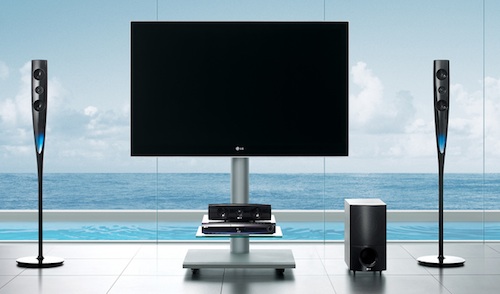
Remember the old joke about the dim tailor who makes a loss on each piece of clothing but hopes to make it up in volume? That describes the market for flat-panel screens for televisions.
None of the companies that produce liquid crystal display (LCD) panels — Samsung and LG Display from South Korea, Japan’s Sharp and Panasonic, their Taiwanese rivals — makes money from it. Between 2004 and 2010 the industry suffered cumulative economic losses of US$13bn, calculates Alberto Moel of Sanford C Bernstein, a broker.
It is not because people hate their products. The world’s couch potatoes spent $115bn on 220m flat-panel televisions last year. Many more displays — some 2,7bn screens worth $110bn — went into smartphones, tablets, gaming gadgets and the like, according to DisplaySearch, which measures such things. Yet profits for screenmakers are nowhere to be seen.
There are several reasons for this. First, today’s products are tough to differentiate between: all are good, cheap and do the same thing. Second, many suppliers expanded capacity in recent years, creating a glut. Third, hard times in rich countries mean that fewer people will splurge on new televisions even if they are cheap.
 The price of LCD panels fell by 80% between 2004 and 2008, while the manufacturing costs declined by 50% (see chart). So margins dwindled to approximately nothing. Some suppliers had no choice but to sell their panels at a loss.
The price of LCD panels fell by 80% between 2004 and 2008, while the manufacturing costs declined by 50% (see chart). So margins dwindled to approximately nothing. Some suppliers had no choice but to sell their panels at a loss.
Clever accounting hid the damage for a while. Panel makers with their own television brands, such as Samsung and Sharp, covered their panel losses with profits from the finished article. Yet slow sales in 2011 mean that even televisions may fall into the red. For firms that only supply screens, such as Chimei Innolux and AU Optronics, the pain may be as long and excruciating as an Oliver Stone film.
No one has a clue what to do. Firms have tried to raise the value of the sets themselves, by increasing the screen size and improving the image quality, to no avail. They have added interactive features such as Google TV or Sony’s online services, but sofa spuds snub them.
LCDs are hurting the world’s biggest consumer-electronics firms. Sony may lose money on its television businesses in 2011 for its eighth consecutive year. In November it halved a previous sales forecast to 20m televisions. This might be a good thing: Sony loses $80 on every set it sells. Panasonic expects its television unit to be unprofitable for its fourth year running and is consolidating factories, shuttering operations and sacking people. Even Samsung, the biggest producer, has posted three quarters of losses on panel manufacturing this financial year. Sharp has converted two factories to make small LCD panels for smartphones and iPads. Smaller panels remain profitable, for now.
Televisions are becoming like air tickets or long-distance phone calls. Everyone loves them. But because so many firms offer them, hardly any can turn a profit. To make matters worse, new Chinese factories may come onstream in 2012, depressing prices even further. — (c) 2012 The Economist![]()
- Subscribe to our free daily newsletter
- Follow us on Twitter or on Google+ or on Facebook
- Visit our sister website, SportsCentral (still in beta)

